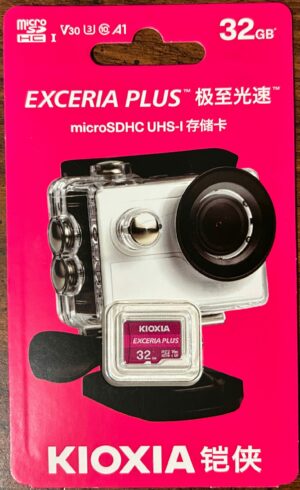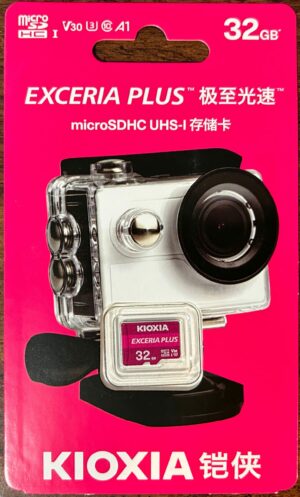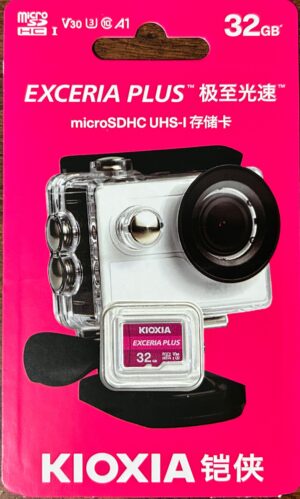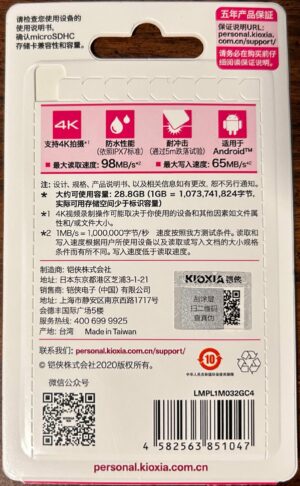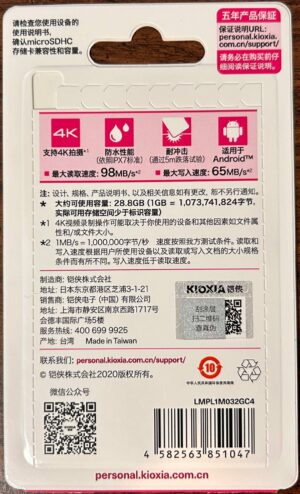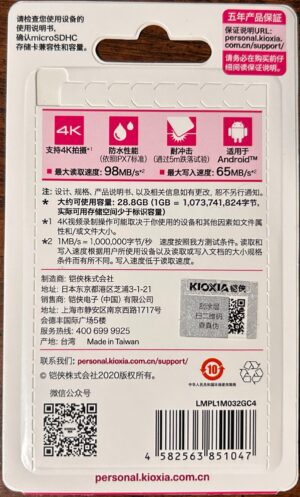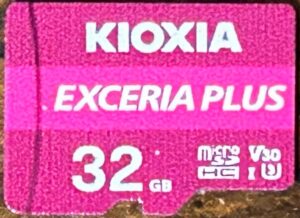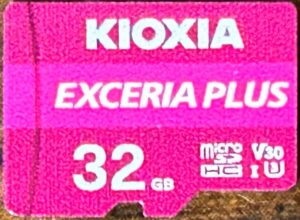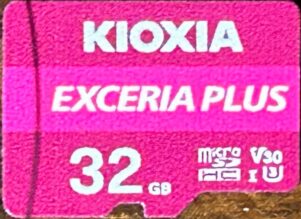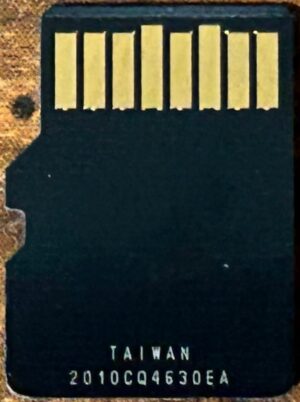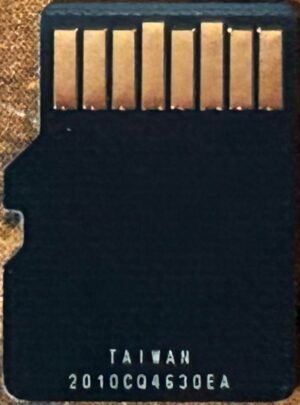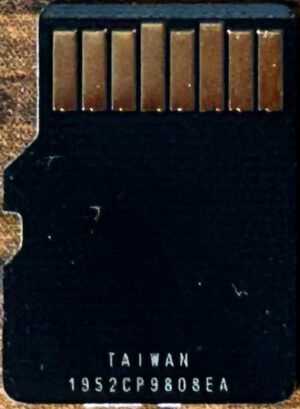- Obtained from: AliExpress
- Price paid: $8.19
- Advertised capacity: 32GB
- Logical capacity: 30,937,186,304 bytes
- Physical capacity: 30,937,186,304 bytes
- Fake/skimpy flash: Skimpy (3.32% skimp)
- Protected area: 83,886,080 bytes
- Adjusted skimp: 3.06%
- Speed class markings: Class 10*, U3, V30, A1*
- CID data:
- Manufacturer ID:
0x02** - OEM ID:
0x544d(ASCII:TM)** - Product name:
0x5545304441(ASCII:UE0DA) - Product revision:
0x71
- Manufacturer ID:
* The Class 10 and A1 markings appear on the product packaging, but do not appear on the card.
** This manufacturer ID/OEM ID combination is pretty well known to be associated with Toshiba/Kioxia.
Discussion
The Kioxia Exceria G2’s performed well in all of the performance tests, which made me curious to see what else Kioxia had to offer.
I was a little surprised to see this card set a new record for skimp in a non-fake flash card, coming at 3.32% — beating out the previous contender, the Kioxia Exceria G2, at 3.30%. I was also a little surprised to see it perform worse in all performance metrics than the Kioxia Exceria G2. It did, however, perform above average in sequential write and random write speeds, but only average in sequential read speeds and below average in random read speeds.
The card bears the U3 and V30 marks, and performance was enough to qualify for these marks. The package also bears the Class 10 and A1 marks; and while performance was good enough to qualify for the Class 10 mark, it wasn’t good enough to qualify for the A1 mark. Interestingly, most other cards that bear the A1 mark have less trouble meeting the threshold for random read operations, and more trouble meeting the threshold for random write operations. This card was the opposite: sample #2 met the 500 random write operations per second threshold, sample #1 came within 3% of that threshold, and sample #3 came just 0.01% short. Random read scores, on the other hand, were farther off the mark.
Endurance tests for these cards are still ongoing:
- Sample #1’s first error was a four-sector wide address decoding error during round 2,319. It has survived 10,618 read/write cycles in total so far.
- Sample #2’s first error was a 1,568-sector wide data verification error during round 2,315; it has survived 10,029 read/write cycles in total so far.
- Sample #3’s first error was a four-sector wide address decoding error during round 1,612; it has survived 9,969 read/write cycles in total so far.
Overall, this seems to be a decent card. It suffers in read speeds, but it makes up for it by delivering superior write speeds. However, the Kioxia Exceria G2 scored better in all metrics that I measured — and was almost half the price. If I had to choose between the two in the future, I’d definitely go for the G2 over this one.
November 4, 2024 (current number of read/write cycles is updated automatically every hour)


